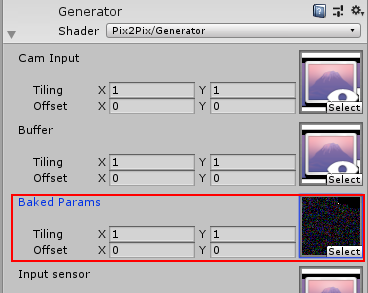A simplified version of the pix2pix generator inside a fragment shader for Unity. This implementation is only 1/4 of the original pix2pix model to help with real time performance in VR.
- Three version of pix2pix: Python, C++, HLSL
- Python + Keras version is the high level overview of the network structure, also does the offline training.
- C++ + OpenCV version is a low level version to help me convert the network into HLSL.
- HLSL version is the one used in-game in VRChat.
- Four pre-trained networks include: Edges2Pikachu, Edges2Mario, Edges2Tree, and Edges2Danly. All networks were trained from 100 to 200 epochs or 1 to 3 million iterations depending on the training size.
- VRC SDK 2 setup in a Unity project
- VRChat layers must be setup already
- Clone the repository
- Open the Unity project
- Import VRCSDK2
- Download the baked weights from https://mega.nz/file/N2BkAJoI#f65jOmX_wFiOjcnnFDX1qj_Gr6pZrG_LOGE4xl9vT44
- Put WeightTex.asset inside \Assets\Pix2Pix\Weights


- Link WeightTex.asset to the "Baked Params" inside the Generator shader.
OR
- Open a new Unity project
- Import VRCSDK2
- Import the Pix2Pix.unitypackage in Releases
If you wish to run the Python code, here's what you need.
- Anaconda 1.19.12
- Python 3.7
- TensorFlow 1.14.0
- Keras 2.3.1
I suggest following a guide on Keras + Anaconda installations like this one https://inmachineswetrust.com/posts/deep-learning-setup/
If you wish to run the C++ code.
You can follow a guide on OpenCV + Visual Studio here https://www.deciphertechnic.com/install-opencv-with-visual-studio/
If you have any questions or suggestions, you can find me on Discord: SCRN#8008

